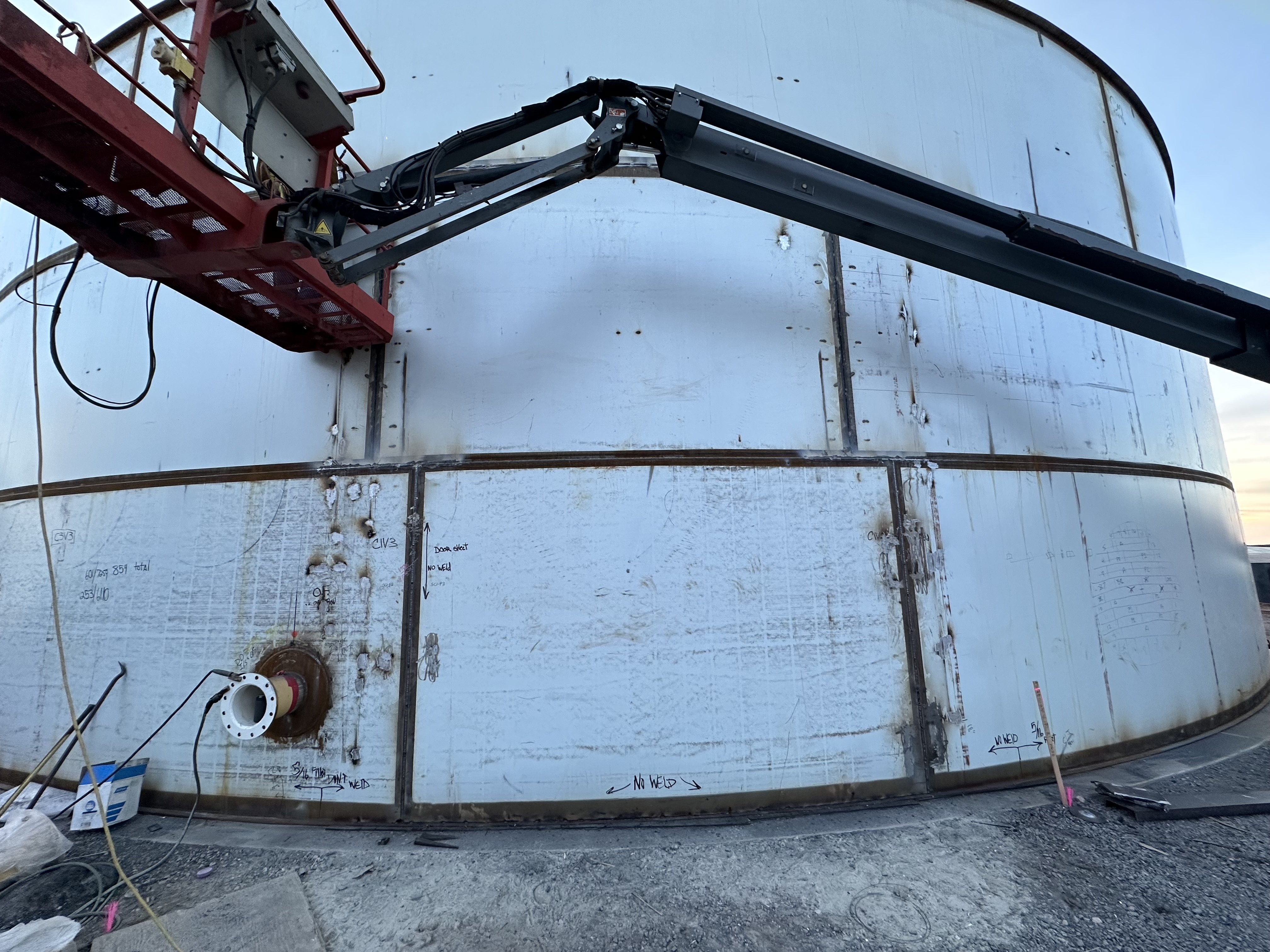The Important Function of Tank Welding Inspection in Ensuring Structural Stability and Safety Compliance in Industrial Applications
In the realm of industrial applications, container welding examination arises as an essential aspect in protecting structural honesty and making certain conformity with security regulations. Making use of a mix of methods such as visual analyses and progressed testing methods, these examinations offer to determine and mitigate possible problems before they rise right into significant threats. The ramifications of these methods expand past mere governing adherence; they essentially impact functional effectiveness and asset durability. However, the intricacies surrounding the evaluation procedure motivate a closer evaluation of its methods and outcomes, disclosing layers of significance that merit additional exploration.
Importance of Tank Welding Assessment

Guaranteeing conformity with market criteria and laws is another significant aspect of container welding assessment. Regulatory bodies mandate strict guidelines for the construction and upkeep of storage space containers, and detailed assessments help companies stick to these demands. Non-compliance can cause extreme charges, including fines and shutdowns, even more emphasizing the need for strenuous assessment procedures.
Moreover, container welding examination plays a critical duty in keeping functional effectiveness. Regular evaluations can determine prospective problems before they escalate, facilitating prompt fixings and lessening downtime. This positive method not only boosts security but additionally adds to cost savings over time. In recap, the relevance of container welding examination hinges on its ability to safeguard public health and wellness, protect the environment, and ensure conformity with governing frameworks.
Key Assessment Techniques
Effective storage tank welding examination depends on a selection of key methods that make certain comprehensive examination of weld quality and architectural honesty. Amongst the most prevalent techniques are visual assessment, ultrasonic screening, radiographic testing, and magnetic particle testing - Tank Welding Inspection. Each technique provides distinct advantages in examining various facets of the weld
Visual evaluation works as the initial line of protection, allowing inspectors to identify surface flaws, abnormalities, or incongruities in the weld bead. Ultrasonic testing employs high-frequency sound waves to detect inner defects, such as splits or gaps, supplying a thorough analysis of weld honesty. This approach is specifically reliable in finding issues that may not show up on the surface.
Radiographic testing utilizes X-rays or gamma rays to create images of the welds, disclosing interior gaps and giving an irreversible record for future referral. This technique is extremely effective for critical applications where the danger of failure need to be reduced.
Finally, magnetic fragment testing is utilized to determine surface and near-surface defects in ferromagnetic products. By applying electromagnetic fields and fine iron particles, inspectors can determine stoppages that could jeopardize the structural honesty of the storage tank. With each other, more helpful hints these techniques create a durable framework for ensuring top notch welds in industrial applications.
Compliance With Safety And Security Criteria

Normal inspections play an essential role in making certain conformity by identifying potential failures or variances from suggested criteria. Assessors are trained to review weld top quality, validate product specs, and examine the general architectural honesty of tanks. Their knowledge is vital in ensuring that welding procedures meet the called for safety and security standards.
In addition, conformity with safety requirements not only protects workers however additionally safeguards the environment from prospective threats such as leaks or disastrous failings. Organizations that focus on safety and security conformity are better placed to mitigate risks, improve functional performance, and foster a culture of safety and security within their workforce. In summary, preserving strenuous compliance with safety requirements is indispensable for the successful procedure of storage tank welding activities in commercial setups.
Advantages of Regular Evaluations
Routine examinations are indispensable to maintaining the architectural honesty and safety of welded containers. These evaluations offer a methodical technique to recognizing possible issues or weak points in the welds, ensuring that any concerns are dealt with before they escalate into significant failures. By conducting regular analyses, organizations can detect rust, tiredness, and other kinds of deterioration that might endanger container efficiency.
Additionally, constant evaluations add to conformity with market policies and standards. Sticking to these standards not just alleviates legal risks but additionally enhances the organization's track record for security and dependability. Regular inspections cultivate an aggressive security culture, urging employees to acknowledge and focus on the relevance of equipment integrity.

Study and Real-World Applications
Situation researches and real-world applications show the tangible effect of effective container welding assessment practices. One significant example is a huge petrochemical facility that dealt with substantial operational disturbances because of leakages in storage containers. Complying with the execution of extensive welding examination methods, consisting of aesthetic and ultrasonic testing, the center identified important flaws in weld joints that could have resulted in catastrophic failings. This positive approach not just prevented environmental threats but likewise conserved the company millions in possible cleanup expenses and regulatory penalties.
Likewise, a water therapy plant applied a detailed evaluation program for its storage tank welding procedures - Tank Welding Inspection. By incorporating non-destructive testing techniques, the plant was able to find very early indications of rust and tiredness in weld joints. This prompt treatment expanded the life-span of the this article tanks and ensured compliance with safety policies, thus guarding public health
These instance researches emphasize the relevance of normal and organized container welding examinations. By focusing on these methods, sectors can reduce dangers, boost structural integrity, and guarantee compliance with safety standards, inevitably bring about boosted functional effectiveness and minimized liabilities.

Verdict
In verdict, storage tank welding inspection is a crucial component of preserving structural stability and safety and security in industrial applications. Using numerous examination methods makes sure very early discovery of prospective imperfections, thereby stopping catastrophic failures.
Comments on “Just How to Make Certain Conformity with Tank Welding Inspection Requirements”